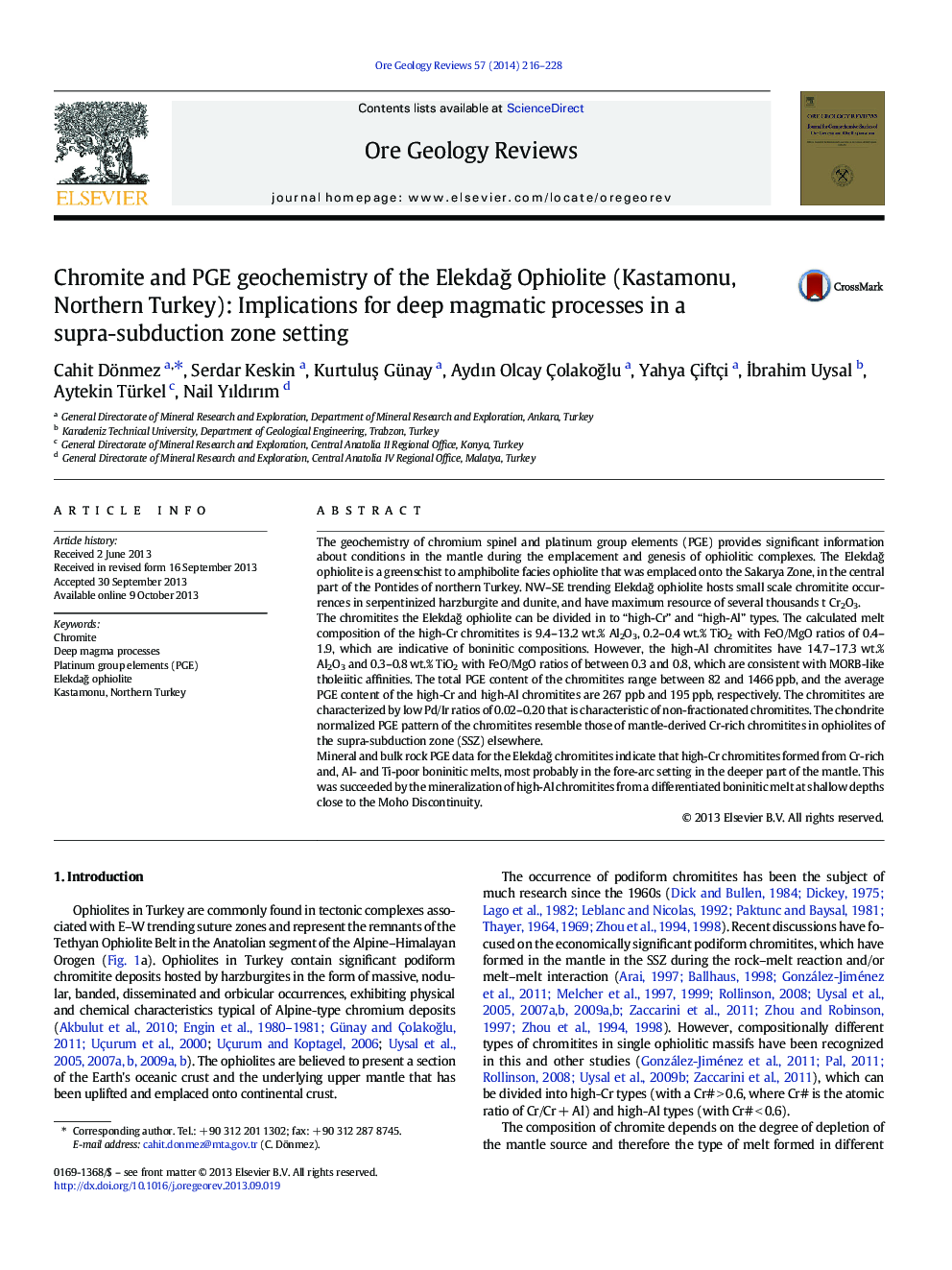| کد مقاله | کد نشریه | سال انتشار | مقاله انگلیسی | نسخه تمام متن |
|---|---|---|---|---|
| 4697503 | 1637246 | 2014 | 13 صفحه PDF | دانلود رایگان |

The geochemistry of chromium spinel and platinum group elements (PGE) provides significant information about conditions in the mantle during the emplacement and genesis of ophiolitic complexes. The Elekdağ ophiolite is a greenschist to amphibolite facies ophiolite that was emplaced onto the Sakarya Zone, in the central part of the Pontides of northern Turkey. NW–SE trending Elekdağ ophiolite hosts small scale chromitite occurrences in serpentinized harzburgite and dunite, and have maximum resource of several thousands t Cr2O3.The chromitites the Elekdağ ophiolite can be divided in to “high-Cr” and “high-Al” types. The calculated melt composition of the high-Cr chromitites is 9.4–13.2 wt.% Al2O3, 0.2–0.4 wt.% TiO2 with FeO/MgO ratios of 0.4–1.9, which are indicative of boninitic compositions. However, the high-Al chromitites have 14.7–17.3 wt.% Al2O3 and 0.3–0.8 wt.% TiO2 with FeO/MgO ratios of between 0.3 and 0.8, which are consistent with MORB-like tholeiitic affinities. The total PGE content of the chromitites range between 82 and 1466 ppb, and the average PGE content of the high-Cr and high-Al chromitites are 267 ppb and 195 ppb, respectively. The chromitites are characterized by low Pd/Ir ratios of 0.02–0.20 that is characteristic of non-fractionated chromitites. The chondrite normalized PGE pattern of the chromitites resemble those of mantle-derived Cr-rich chromitites in ophiolites of the supra-subduction zone (SSZ) elsewhere.Mineral and bulk rock PGE data for the Elekdağ chromitites indicate that high-Cr chromitites formed from Cr-rich and, Al- and Ti-poor boninitic melts, most probably in the fore-arc setting in the deeper part of the mantle. This was succeeded by the mineralization of high-Al chromitites from a differentiated boninitic melt at shallow depths close to the Moho Discontinuity.
Journal: Ore Geology Reviews - Volume 57, March 2014, Pages 216–228